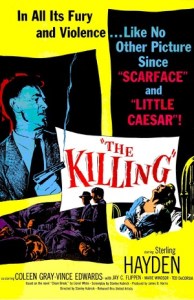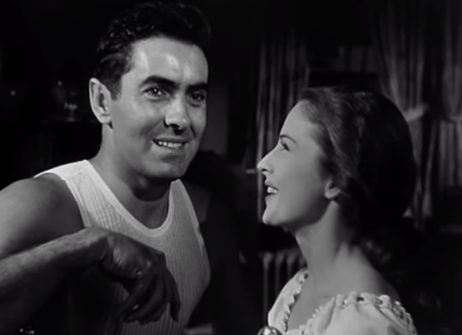
Tyrone Power was a handsome fellow and it led to a meteoric rise among Hollywood’s elite. But as often is the case, a pretty face can be your undoing as people only see a movie idol and not an actor. Daryl Zanuck for one saw one of his biggest box office draws in Tyrone Power and he was protective of that image even after coming back from the war.
However, to his credit, in Nightmare Alley Power persistently went after a role that put his talents on full display by wickedly subverting his longheld screen persona. Zanuck was undoubtedly horrified by the results and pulled the picture out of circulation as quickly as he possibly could while giving it little publicity. And yet thank goodness this picture remains today — a testament to the peculiar oddities that managed to come out of Hollywood — for one an A-list picture where one of the biggest names in the business plays an opportunistic sleazebag.
Stan Carlisle (Power) is an up-and-comer in a trashy traveling carnival that brings in the hordes of local yokums through sleight of hand, mysticism, and outright exploitation. One of their biggest acts is the dubiously named “Geek” show while Stan does his bit with “Madame Zeena” (Joan Blondell) and her alcoholic has-been husband.
Meanwhile, the young man’s charismatic qualities aid him in talking up hick sheriffs trying to close down the establishment and run them out of town. He seamlessly spouts off the gospel he learned in an orphanage to captivate his audience noting foxily, “Boy how I went for salvation. It’s kind of handy when you’re in a jam.” He can spin just about anything to get what he wants.
Though Pete is all dried up, Zeena still has it and the ever-industrious Stan convinces her to teach him the secret code that they used to utilize in the old days to completely captivate the crowds with feats of extrasensory perception. Ever the carnival showman he soon rebrands himself as a mentalist extraordinaire “The Great Stanton” taking his adoring carnival cohort Molly (Coleen Gray) along with him following a shotgun wedding demanded by the resident strongman (Mike Mazurksy). Zeena and the other carnival nobodies get left behind without a note of gratitude.
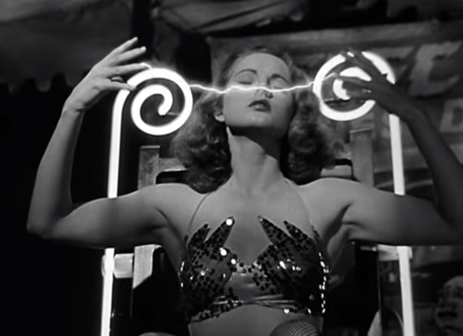
There are innumerable intricacies found throughout Nightmare Alley but the overarching themes revolve around the three women in Stan’s life who ultimately shape his existence. Zeena is the veteran who gets him his foot up while her deck of tarot cards including a hangman remain a harbinger of future misgivings.
Only now do I realize that Colleen Gray’s demure qualities are rather reminiscent of Joan Fontaine and she remains a textbook guardian angel figure. In later years she would devote herself to numerous charities including Chuck Colson’s Prison Fellowship. What so easily gets forgotten, in the midst of Power’s disingenuous portrayal, is Helen Walker as the equally unscrupulous psychoanalyst who in many ways bests him in a very unconventional femme fatale role.
However, with Molly’s assistance, they’re initially able to begin to realize his dreams of the big time where they take their shows into swankier places with more respectable audiences who they are nevertheless still able to dazzle. And yet the recurring attribute of a man such as Carlisle is that he can never be satisfied. There must always be another greater success to follow up every previous exploit.
He unwittingly finds his next access point when crossing paths with the dubious analyst named Ms. Ritter (Walker) with extensive records on numerous influential people. She and her new accomplice go in cahoots and Carlise soon realizes his next aspiration that of a spook act. But far from just being a gimmick to get money, it becomes a form of spiritual comfort to people. In many ways, it seems like he is playing with fire. He hardly knows who he is dealing with in Lillith Ritter and he keeps the entire arrangement conveniently hidden from his wife.
Instead, he tries to use her in one last payoff with Molly masquerading as the specter of an old man’s long-lost beau. But she is so unlike Stan. She cannot manipulate a man in such a way and she’s equally afraid. She confronts her husband, “You make it sound so sacred and holy when all the time it’s just a gag with you…You’re just laughing your head off at these chumps. You think God’s going to stand for that?”

Not only is Nightmare Alley a carnival noir with the dark palette courtesy of veteran Lee Garmes but thematically, we also take a cynical nosedive into ominous even sacrilegious territory. It’s an heir apparent to such 1930s films like Blue Angel (1930), Freaks (1932), and Miracle Woman (1931). Fundamentally it charts the rise and fall of a single man who used religious clout and chicanery only to end up as an ostracized carnival commodity. He went from using others to being used because he winds up a good-for-nothing. So the story predictably comes full circle.
The film is good enough not to give us a happy ending. Yes, it cuts the dramatic arc short but that only saves us from the foregone conclusion. Molly clings to a now paranoid and wasted Stan — a shell of the whip-smart punk he used to be — promising to take care of him. Zeena made that promise before to her husband too and look what happened to him.
There was no reemergence or getting back to the way things used to be. What’s to make us think that this version will be any different? In fact, it’s probably even more haunting than actually knowing definitively what will happen because we are forced to leave the movie in the shadowy ambiguities. What isn’t ambiguous is Tyrone Power in the most duplicitous and simultaneously most devastating showing of his career.
4/5 Stars

 Saying that Phil Karlson has a penchant for gritty crime dramas is a gross understatement. And yet here again is one of those real tough-guy numbers he was known for, where all you have to do is follow the trail of cigarette smoke and every punch is palpable–coming right off the screen and practically walloping you across the face.
Saying that Phil Karlson has a penchant for gritty crime dramas is a gross understatement. And yet here again is one of those real tough-guy numbers he was known for, where all you have to do is follow the trail of cigarette smoke and every punch is palpable–coming right off the screen and practically walloping you across the face.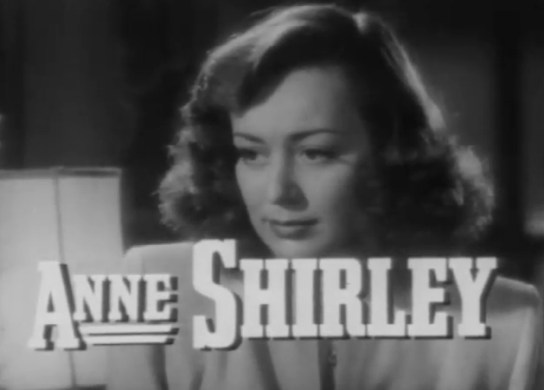

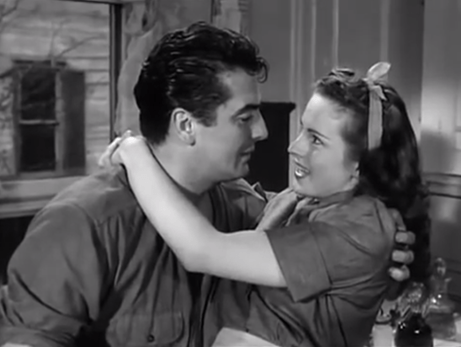



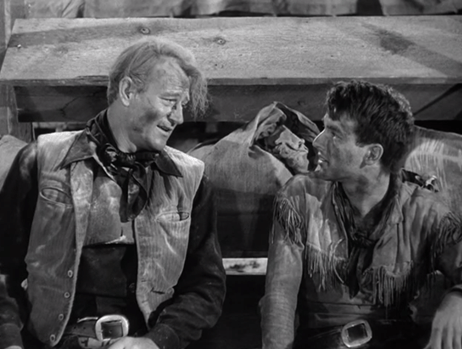
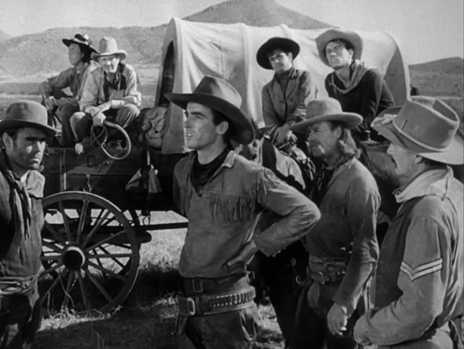

 ay finally comes when Nick gets out and he has Nettie waiting for him with his two girls. They are a beautiful happy family and Bianco has remade his life possibly better than it ever was before. However, he’s still beholden to the D.A. and they want him to get dirt on Tommy Udo. They don’t know what they’re asking, but still, Nick goes through it reassured that depending on what he can get, Udo will be put away for good. But of course, the slimeball beats the rap and Nick’s now a sitting duck. He sends his family away and waits for a confrontation with Udo.
ay finally comes when Nick gets out and he has Nettie waiting for him with his two girls. They are a beautiful happy family and Bianco has remade his life possibly better than it ever was before. However, he’s still beholden to the D.A. and they want him to get dirt on Tommy Udo. They don’t know what they’re asking, but still, Nick goes through it reassured that depending on what he can get, Udo will be put away for good. But of course, the slimeball beats the rap and Nick’s now a sitting duck. He sends his family away and waits for a confrontation with Udo.
